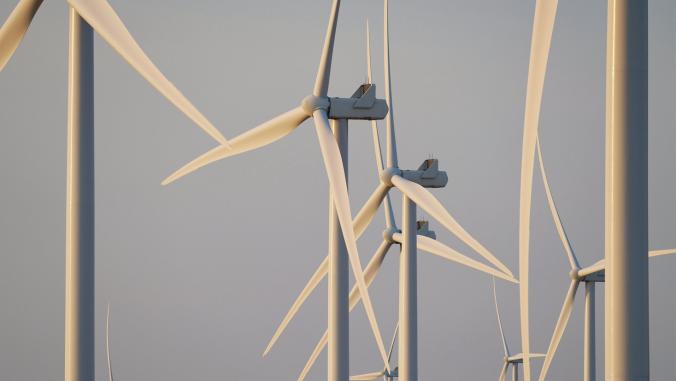Just what the doctor ordered: Kaiser powers forward with renewable microgrids
The critical systems at its facility in Richmond, California, can operate for up to three hours when the broader grid goes down.

The medical center in Richmond, California.
You could say Kaiser Permanente has a healthy interest in solar power. The Oakland, California-based not-for-profit health care organization hosts panels on close to 50 sites — a number that could double in the next two years at facilities it owns outright in its operating territory.
Increasingly, the prescription for those onsite installations will include energy storage technology whenever possible, as the company applies technical and economic learnings from an innovative microgrid project at its Richmond, California, medical center. The project is (so far) the only renewable energy-fueled microgrid at a California hospital.
"We will combine onsite generation with battery storage in a number of places," said Seth Baruch, national director of energy and utilities for Kaiser Permanente. "That is [a strategy] tied to resilience and grid reliability, [and] it will also help optimize the economic benefits of our solar projects."
Kaiser Permanente’s investments in renewable power — both on its owned facilities and through virtual power purchase agreements — are part of the health care group’s goal to achieve carbon neutrality by 2020 and to reduce more greenhouse gases than it emits by 2025 (become "carbon positive"), Baruch said. Kaiser Permanente also focuses closely on energy efficiency: It has committed to reducing its intensity by 10 percent by 2020, despite recent acquisitions that have expanded the organization’s operating footprint including its foray into Washington state through the $1.8 billion buyout of Group Health Cooperative.
Its progress so far has been notable. Over the past 10 years, the organization has reduced greenhouse gas emissions by 29 percent — even as membership mushroomed by 24 percent to an estimated 12.2 million people during the same time frame.
So when does Kaiser Permanente opt for an onsite installation of solar photovoltaic panels versus fuel cells — often a tougher justification from a carbon emissions standpoint?Over the past 10 years, the organization has reduced greenhouse gas emissions by 29 percent — even as membership mushroomed to an estimated 12.2 million people.
A number of factors drive the ultimate decision, including the availability of economic incentives (a state-by-state decision); the power load that the site supports; physical space constraints at the location; and the electric system upgrades (such as a transformer overhaul) that the investment in onsite generation might require. Ultimately, Baruch’s preference is to let individual locations make the go or no-go decision.
In many places, Baruch noted, it’s more difficult to get the case for fuel cells to pencil out financially because of the factors listed above.
"We should do this any site where it would be at or below the avoided cost from the utility," he said.
More frequently, that decision-making process will include an evaluation of whether onsite energy storage can help the organization meet both its carbon reduction commitments and its responsibility to remain up and running during outages that might be occasioned by the effects of extreme weather, such as floods or fires, or other unforeseen circumstances.
Kaiser Permanente’s ground-breaking experiment with integrating solar PV and battery storage in Richmond (which has come into place in phases the past two years) will serve as a guide for those investments. The installation was made possible by a $4.7 million grant provided through the California Energy Commission’s Electric Program Investment Charge (EPIC) program. It was designed and engineered by Los Angeles-based energy consultant and developer Charge Bliss; technology providers OSIsoft and Princeton Power Systems also provided a total of $2 million in funding.
The project's goal was to equip the 50-bed acute care facility with the technology necessary to help it operate as an "island" that could support a portion of the critical systems needed to serve patients for up to three hours — essentially providing it with a source of backup electricity in cases of a broader grid outage. The installation is being studied by California’s Office of Statewide Health Planning and Development as a demonstration of whether similar microgrids should be recommended elsewhere.
From Kaiser Permanente’s standpoint, there are multiple benefits to a renewable microgrid such as the one in Richmond.The project's goal was to equip the 50-bed acute care facility with the technology necessary to help it operate as an 'island' that could support systems needed to serve patients for up to three hours.
For starters, the 250-kilowatt solar PV installation on the top of the facility’s parking garage helps reduce the hospital’s utility electricity usage by at least 365,000 kilowatt-hours annually, according to the project specifications (PDF). A one-megawatt battery serves two purposes: Not only is it designed to provide a three-hour backup window, it is also paired with intelligent controllers and software that enable the facility to take advantage of demand response programs. At the time it was specified, the project was expected to save up to $141,000 annually. (Part of that amount accounts for the cost of buying fuel for diesel generators.) Baruch didn't discuss the actual financials of the project.
Currently, electricity accounts for just over half of Kaiser Permanente’s total carbon footprint, depending on the loads being supported during given time periods, he said. Kaiser Permanente’s ability to manage that consumption more closely on a site-by-site basis is imperative.
Aside from a deeper commitment to energy storage installations in the future, you also can expect Kaiser Permanente to continue adding electric vehicle charging infrastructure at sites where member and employee interest suggests it might be put to good use. Currently, Kaiser Permanente supports more around 300 stations at 37 locations. Its pipeline for 2018 could expand the number of stations by 80 to 90 ports this year, Baruch said.
Editor's note: This story was updated July 6 to clarify timing of future investments, as well as the organization's "carbon positive" commitment.





